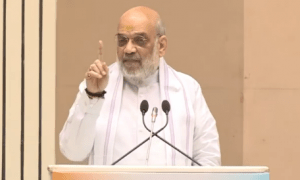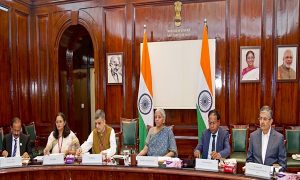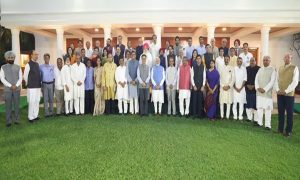While malnutrition continues to remain a leading risk factor for deaths in under-5 children, accounting for 68.2% of the total under-5 deaths, at least 11.5% of children between the age of 2 and 4 years are overweight, shows a study published in the leading medical journal The Lancet on Wednesday.
The prevalence of obesity in Indian children increased significantly during 1990-2017, which is the period of the study, with an annual rise of 4.98%. The projected prevalence is 17.5% in 2030, an estimate which is worrying experts.
“It is a matter of concern as we have seen through certain other studies that about 9% children are pre-diabetic. A lot is to be blamed on their lifestyle which is largely sedentary, and wrong eating habits. Look at the kids in metros, a large number is overweight. It is a matter of concern and we are thinking of ways to deal with it,” said Dr Vinod Paul, member, Niti Aayog.
The estimates were published in The Lancet Child & Adolescent Health by the India State-Level Disease Burden Initiative, a collaboration between the Indian Council of Medical Research (ICMR), the Public Health Foundation of India (PHFI), Institute for Health Metrics and Evaluation (IHME).
The study shows 23 states have child overweight prevalence higher than the national prevalence, with Telangana and Delhi having prevalence as high as 23.2% and 23.1% respectively. At least 6 states have child overweight prevalence of more than 20%.
“The problem of overweight or obese children has just started, and we have enough indicators before us to warn us that time is now to act. However, we must not forget that malnutrition in children in India is a bigger problem and that is a leading cause of many metabolic and other life-threatening disorders among children,” said Dr Balram Bhargava, director, ICMR.
The researchers analysed the disease burden, attributable to child and maternal malnutrition, and the trends in the malnutrition indicators from 1990 to 2017 in every state of India using all accessible data from multiple sources, as part of Global Burden of Diseases, Injuries, and Risk Factors Study (GBD) 2017.
Low birth weight, stunting, wasting, anaemia are among the forms of malnutrition that can lead to life-threatening conditions such as neonatal disorders, lower respiratory infections, and diarrhoeal diseases.
Low birth weight needs more focus as the data shows the prevalence of it in India in 2017 was 21.4%.
“It is one of the major contributors of death and disability adjusted life years among other malnutrition-related problems. Inadequate maternal nutrition is one of the reasons,” said Lalit Dandona from Public Health Foundation of India, who is also director, India State-Level Disease Burden Initiative.
“Over the last 27 years that have been analysed as part of the study, there has been a two-thirds decline in child mortality rate and that’s attributed to malnutrition but it is still a leading cause of mortality in children, highlighting the fact that a lot more needs to be done,” he added.
How healthy an adult is depends a lot on their nutritional status during the first 1,000 days of life.
“This study has state-wise data that can help them see where they stand. Some states need to step up,” said Dr Hendrik Bekedam, WHO representative to India.




























 WhatsApp us
WhatsApp us